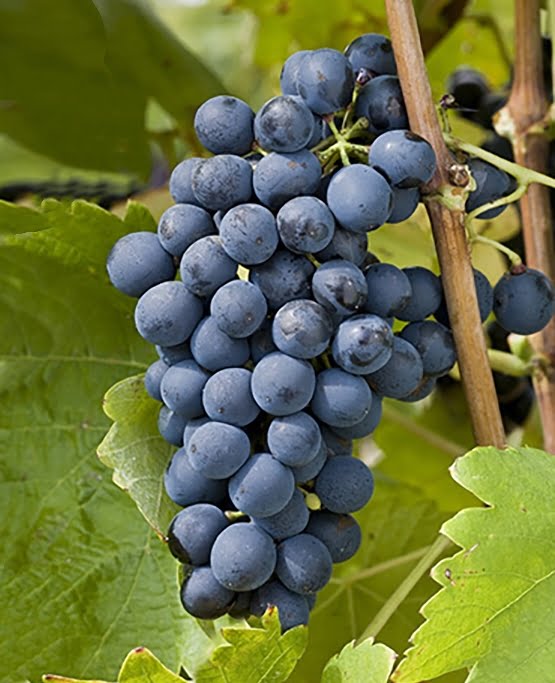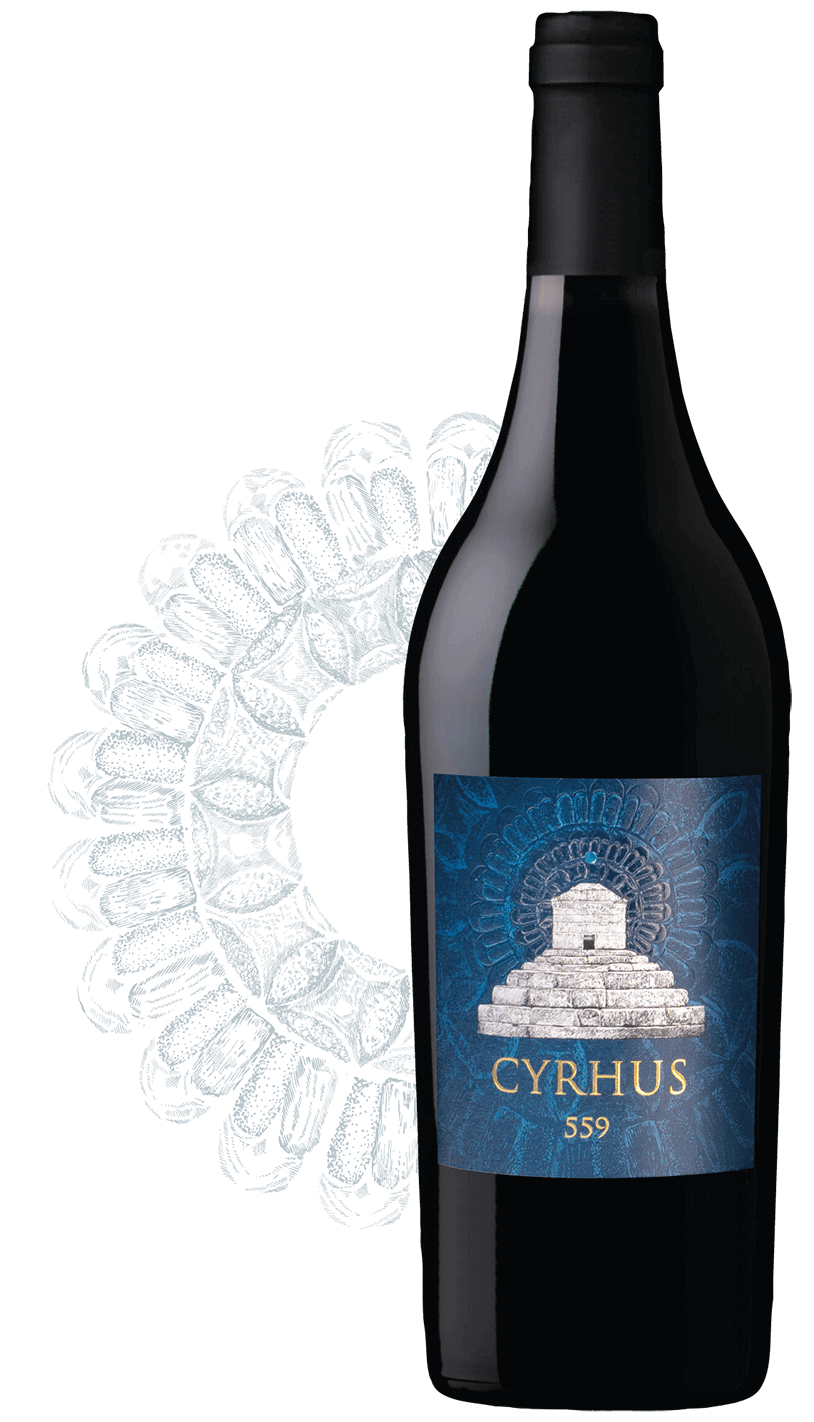
Cyrhus
In the 2010s, the perfect location finally came along, as did the right winemaking partner. Since 2016, on a clay-limestone hillside with good sun exposure, two hectares of vines have been slowly but surely taking root.
The choice of grape variety was a simple one, for only one grape could truly embody this renaissance: Shiraz, the name of the city which the great poets Hafez and Saadi called home. It provides the wine with all the tannic power it needs, not to mention an intense red colour with bluish highlights, two highly symbolic colours in the Cyrhus story.
The wine is then aged in porous terra cotta amphorae, crafted to mimic the properties of those used by the winemakers of the Proto-Elamite period on the high plateaus of the Zagros region.
Recent advances in molecular archaeology have revealed the presence of pine resin, which is very similar to the mastic resin produced on the island of Chios, in the earliest earthenware jars showing traces of winemaking activity.
Chios mastic resin was used to partially coat the inside surface of the amphorae in which wines are aged. This innovation helps to control the interaction between the wine and the oxygen outside. You can also detect its presence when tasting, in the form of an extremely subtle hint of menthol.
In order to bind the destiny of CYRHUS to its roots in the ancient birthplace of wine, Masrour Makaremi pours a portion of each vintage into a Sassanid amphora which held its first batch of Persian wine some 17 centuries ago… A marriage of science and symbolism, art and oenology.
The history of Shiraz and the history of Syrah are inseparably entwined. Shiraz is the name used for Syrah in both Iran and Australia. In fact, this grape variety is known by an impressive array of names in different parts of the world: Antournerein, Balsamina, Biaune, Candive Entournerein, Hermitage, Hignin noir, Marsanne noire, Petite Sirah, Petite Syrah, Plant de la Biaune, Sarine, Schirac, Schiras, Sereine, Serène, Serine, Shiraz, Shyraz, Sirac, Sirah, Syra, Syras, Syrrah…
Over the centuries, Shiraz has accrued no end of origin stories. Some claimed a connection with the city of Shiraz (or Chiraz) in Iran, others suggested it might have been imported to France from Iran by the knight Gaspard de Stérimberg, who retired to his winemaking estate on the hillsides of Hermitage in 1224. Another theory held that it was the Roman Emperor Probus who introduced Shiraz to Gaul in the 3rd century BCE, to relaunch the province’s wine industry.
It has even been suggested that Shiraz was spread elsewhere by the Romans during their conquests, having originated in Siracusa, south-east Sicily.
An anecdote from more recent times is worthy of note: in 1833, Australian merchant James Busby introduced Syrah vines from the French Hermitage region to the southern continent. He announced this new arrival under the name Scyras. It was widely assumed that he had made a simple spelling mistake, but Busby’s journal from this period indicates that he was actually well-acquainted with the Persian legend. Busby’s intention was to give the grape a name which evoked the city of Shiraz, highlighting its historic origins.
The debate was finally settled once and for all in 2001, when genetic analyses demonstrated that Syrah was actually created by cross-breeding two very old French grape varieties associated with the Rhone Valley: Dureza and Mondeuse Blanche.

FROM CYRUS to CYRHUS
Masrour Makaremi was born in Shiraz, Iran, into a family committed to defending the individual and collective freedoms of the Iranian people. When his mother was imprisoned and subsequently died, Masrour left Iran at the age of ten and settled in France. It was here that he finally got to know his father, Hassan, who had been forced into exile in 1979.
Fascinated by the sciences, Masrour studied to become an orthodontist. He now runs a surgery in Bergerac, while also acting as CEO of a start-up developing AI-based technologies for use in the medical sector. In 2022, he completed a Ph.D in cognitive neuroscience.
Passionate about Persia, he also collects ancient artefacts from his homeland and devotes much of his spare time to broadening his knowledge of this rich heritage. His dream is to see the rebirth of the culture which represents his most cherished inheritance, and to share this History with the world. And so, CYRHUS was born.
For Masrour Makaremi, CYRHUS is more than a wine: it is a symbol of defiance. An act of resistance in the face of a regime which, in the space of just a few decades, has wiped out thousands of years of winemaking history. It is the ambition of a lifetime, a wish for the future, with the ultimate dream being to one day see vines thriving in Iran once again.

Every last detail of the bottle which houses Cyrhus resonates with this Persian heritage: the stone monument on the label is the tomb of Cyrus the Great in the city of Pasargadae in the Fars Province, while the radiating elements evoke the rosette motifs beloved of ancient goldsmiths and decorative artists. Persian Blue appears in various hues, from the luminous azure of Ispahan to the intense tones of Shiraz.
Cyrhus is a strictly limited-edition cuvée, and every bottle is individually numbered.
In a moment of great symbolic importance, some of the wine is first poured into an amphora dating from the Sassanid era. Each bottle of Cyrhus is unique, and each bears a symbolic tribute to Persia, the historic cradle of winemaking.
The wine is a powerful, deep-red colour with bluish highlights. The aromatic palette includes hints of green and black olives, along with a bouquet of spicy notes dominated by saffron. This is a wine of remarkable balance, full-blooded and powerful yet fresh with menthol nuances. The tight, finely wrought tannins offer remarkable length on the palate, building to a refreshing finish with a distinctive tang. A true original and a wine of great character, to be experienced and enjoyed as a work of art, the accomplishment of a life-long dream.
- Grape varieties: 100% Shiraz
- Average age of the vines: 7 years
- Area under vine: 2 ha
- Appellation: Vin de France